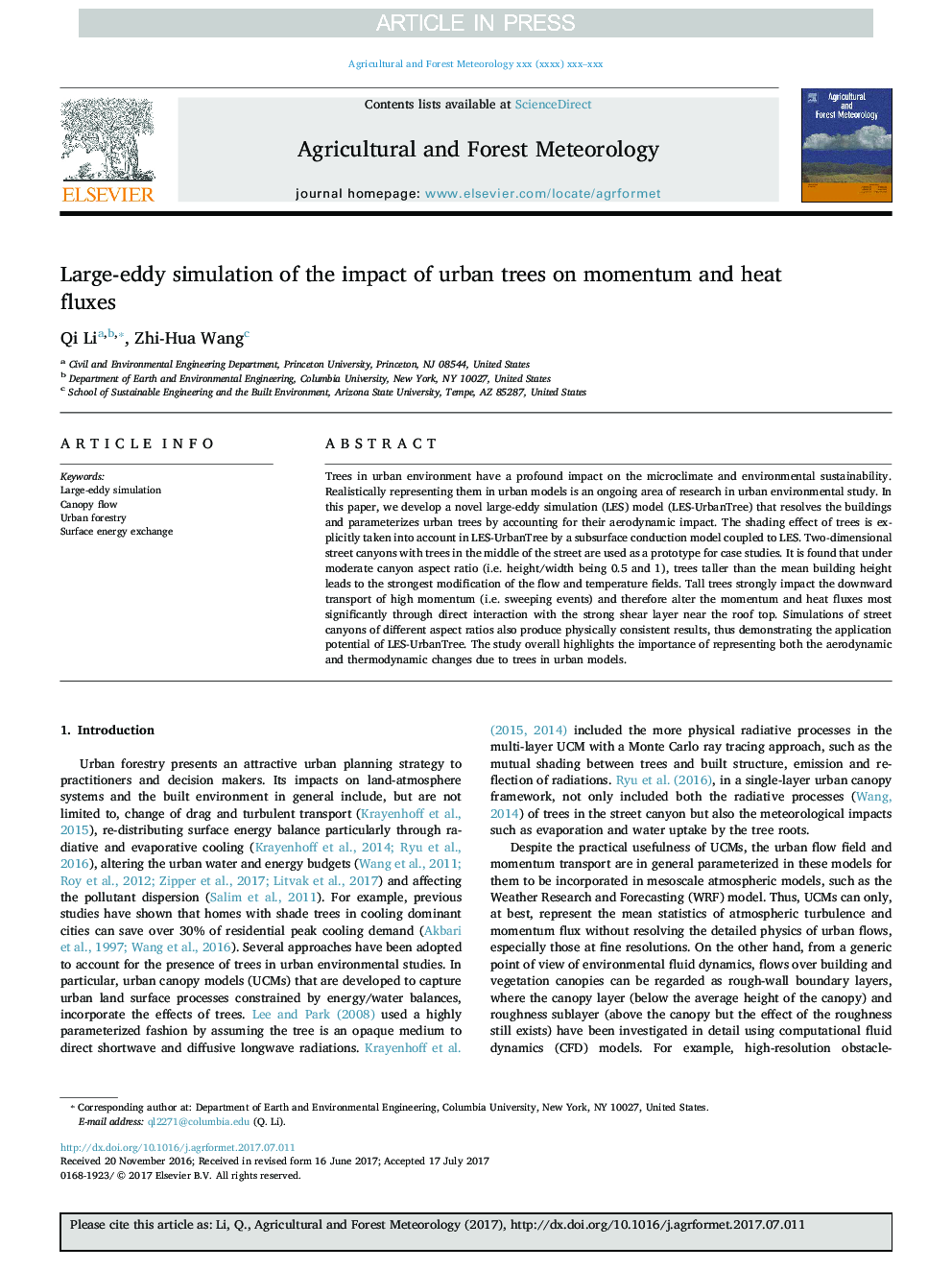| Article ID | Journal | Published Year | Pages | File Type |
|---|---|---|---|---|
| 6536726 | Agricultural and Forest Meteorology | 2018 | 13 Pages |
Abstract
Trees in urban environment have a profound impact on the microclimate and environmental sustainability. Realistically representing them in urban models is an ongoing area of research in urban environmental study. In this paper, we develop a novel large-eddy simulation (LES) model (LES-UrbanTree) that resolves the buildings and parameterizes urban trees by accounting for their aerodynamic impact. The shading effect of trees is explicitly taken into account in LES-UrbanTree by a subsurface conduction model coupled to LES. Two-dimensional street canyons with trees in the middle of the street are used as a prototype for case studies. It is found that under moderate canyon aspect ratio (i.e. height/width being 0.5 and 1), trees taller than the mean building height leads to the strongest modification of the flow and temperature fields. Tall trees strongly impact the downward transport of high momentum (i.e. sweeping events) and therefore alter the momentum and heat fluxes most significantly through direct interaction with the strong shear layer near the roof top. Simulations of street canyons of different aspect ratios also produce physically consistent results, thus demonstrating the application potential of LES-UrbanTree. The study overall highlights the importance of representing both the aerodynamic and thermodynamic changes due to trees in urban models.
Related Topics
Physical Sciences and Engineering
Earth and Planetary Sciences
Atmospheric Science
Authors
Qi Li, Zhi-Hua Wang,
